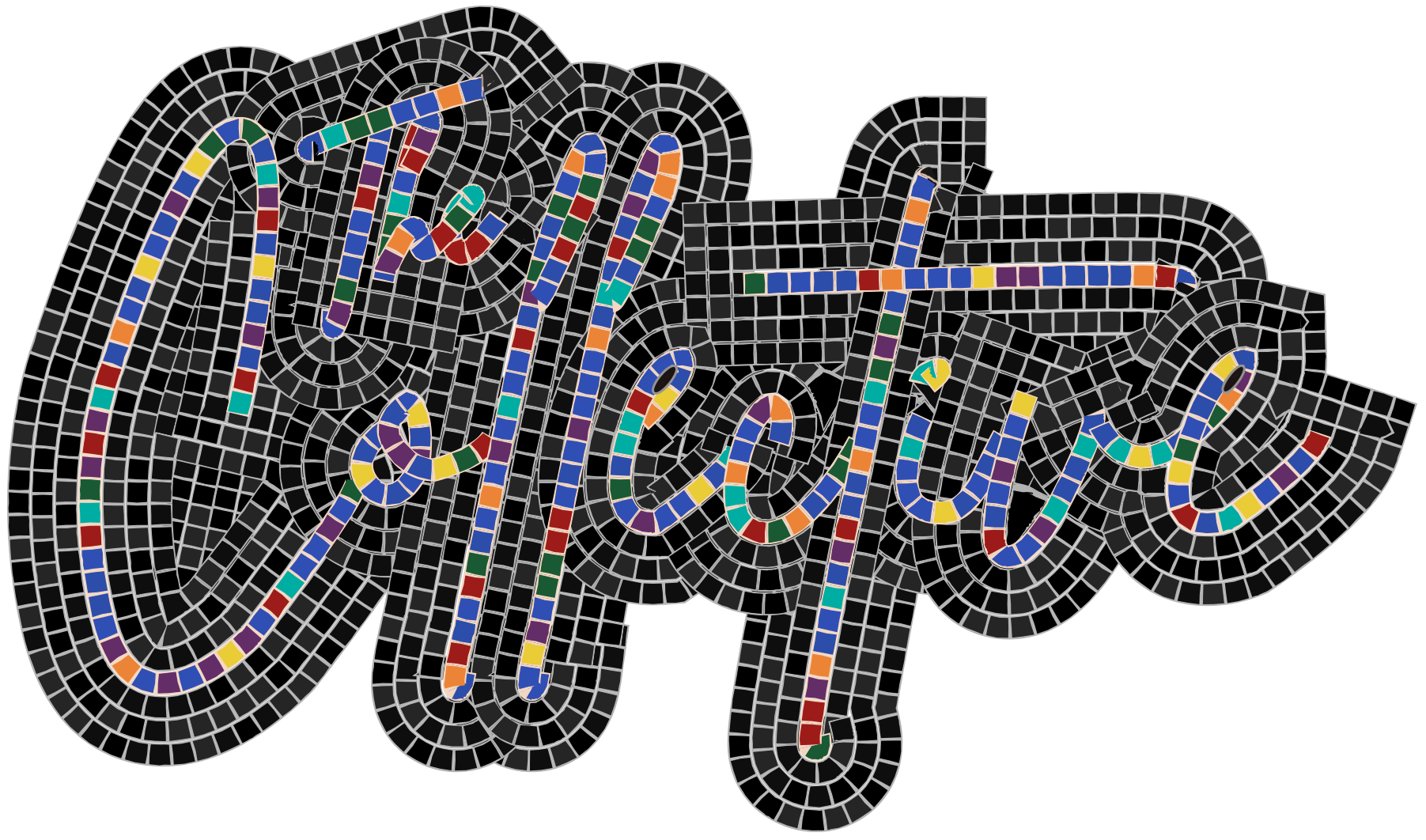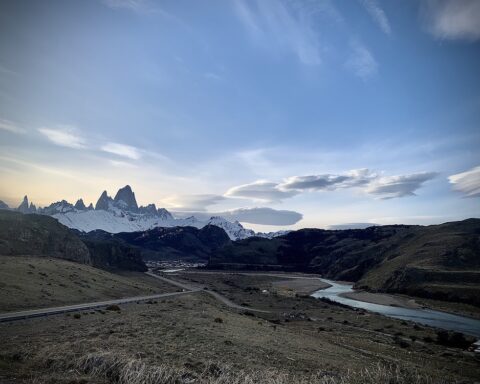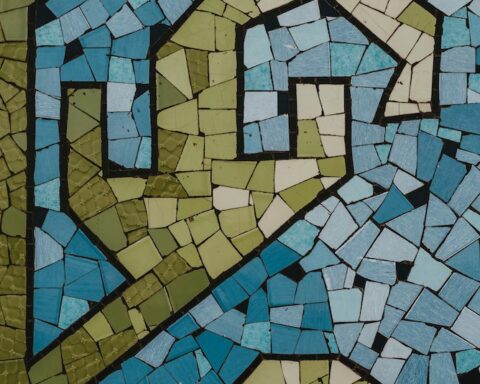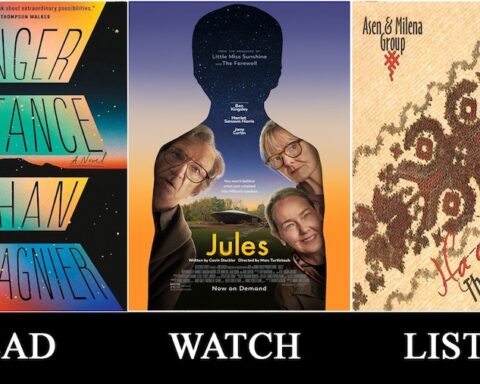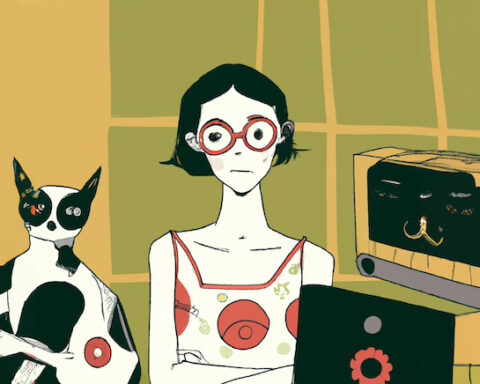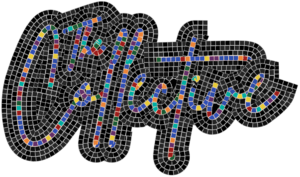During my master’s degree, I observed an incredible dance setting of Igor Stravinsky’s L’Histoire du Soldat, complete with costumes, a solo dancer paired with each character of the story, and full production with lighting and basic set design. It was a collaboration between the University of Missouri-Kansas City Conservatory Wind Symphony (conducted by my mentor at UMKC) and the dance area. I had heard recordings of the work before, but this presentation brought greater depth and dimensionality to the story beyond Stravinsky’s narration and the typical presentations that involve actors and costuming. My mentor was known for his creative collaborations — just before my arrival, he led a unique staging (complete with lighting design, dancers, props) of a suite from Leonard Bernstein’s On the Waterfront, which drew me to study with him. That experience with L’Histoire ignited in me a passion for seeking collaborative creative projects, as well as more academic study of nontraditional performances and venue spaces.
It was in this spirit that I developed my final doctoral project at the University of Illinois, in conjunction with my thesis on Ba Yin by Chen Yi (a work for saxophone quartet and chamber winds/percussion). I met Chen Yi while at UMKC, where she serves as Distinguished Professor of Composition. I was instantly attracted to her music for its insatiable energy, craft, and compelling expressivity, and I knew I wanted to bring her to Illinois as part of my final project. Not knowing yet what the visit would entail, but inspired by my experiences at UMKC, I set out to build a collaborative residency, something I had never attempted before.
In early Fall 2022, I reached out to Chen for her availability, and we settled on a three-day visit from March 22-24, 2023. I was ecstatically dreaming of collaborations across the School of Music, a comprehensive residency with masterclasses, open rehearsals, and musicology seminars. Sketching out a preliminary schedule for the residency, I kept asking the question “What if?” What if she was able to give several lectures to multiple departments on campus? What if I interviewed her over public radio? I allowed for my planning at this stage to be as free as possible and to not worry (yet) about feasibility. I understood pragmatism and practicality would be the tools with which I would shape my initial ideas into their final form.
However, all the dreaming was futile without proper funding, and the ensuing search was a curious quest that took the residency in a completely new direction. I started with the School of Music, hoping to coalesce many different sources to create the necessary budget. I also applied for, and gratefully received, the Lorado Taft Grant from the College of Fine and Applied Arts (FAA). It was a start, but not enough to fully realize my dream of a comprehensive residency. It was my advisor’s suggestion to look outside of FAA, to think outside the box, that resulted in a major door opening.

Together, we determined the Department of East Asian Languages and Cultures might be interested in someone of Chen Yi’s stature visiting campus. I searched Course Explorer, found a professor who taught a class in Chinese art, and cold emailed her about the residency idea. Cold calls and emails are rarely enjoyable for me (or anyone!); especially in periods of ambiguity, constantly throwing lines out hoping for a positive response takes me time, patience, and honestly a very short memory so I don’t get caught up in the negative “what ifs” of these scenarios. What if I don’t hear back from these professors? What if I can’t get enough interest to fund her visit? Those types of “what ifs” would suck away energy from focusing on the things I could control in the initial planning. Sending cold emails was again a reminder that in these moments of uncertainty, letting go of control prevented wasting energy on hypotheticals.
Happily, in response to said “cold” email, the professor specializing in Chinese art directed me to her department chair, to whom I pitched the idea over a video meeting. Having sung some of Chen Yi’s choral music in the past, the chair proposed using her department’s Kang Endowed Lectureship for Chen Yi’s visit, pending donor approval. Their approval included one stipulation — the department chair wanted a special event that administrators and the donor family could attend as a capstone to the residency. I proposed an evening concert featuring Chen Yi’s music, with lighting, visual art, and dance to create a multimedia, immersive audience experience. The department chair loved the idea, and the Kang family graciously approved.
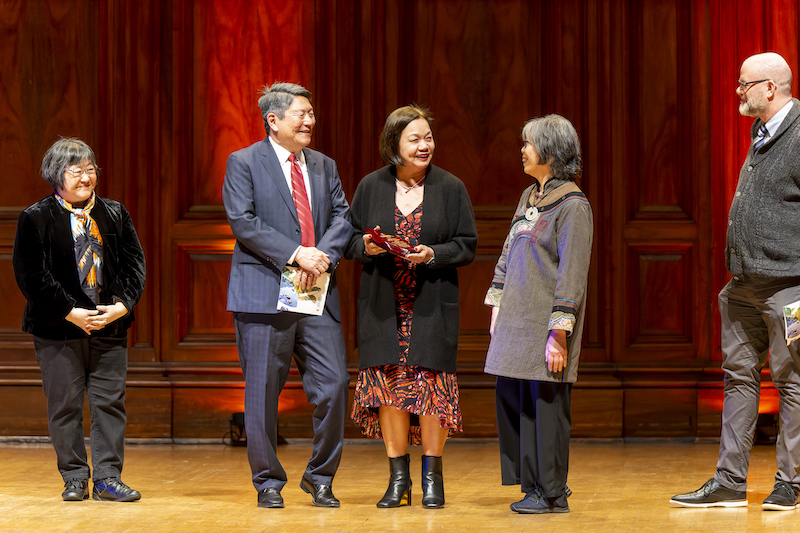
This endowment opened many new possibilities for the residency. While researching for my thesis, I came across the wenren, a group of philosopher-artists in ancient China who explored poetry, painting, music, and calligraphy, among other artistic pursuits. In their authoritative book Chen Yi, scholars Leta Miller and J. Michele Edwards elucidate how Chou-Wen Chung, Chen Yi’s mentor at Columbia University, inspired her to think interdisciplinarily in her source material and subject matter, like the wenren. I was drawn to this approach; it inspired me to design the multimedia concert in such a way that the added visual elements stemmed from both Chen’s music and the subject matter that inspired the selected works (often poetry or visual art). I recruited a lighting designer and visual artist through more cold emails to respective department chairs in FAA (who, in turn, emailed students with the pitch).
Once I was paired with the visual artists, we met and toured the venue in the months before the show, discovering possibilities within the space (projection, screen, outlets) to create an immersive audience experience. The initial idea was to use lighting and projections to complement the music and heighten the atmosphere of each work, starting with a pre-concert show incorporating a projection loop and music to set the mood as the audience entered. However, we kept running into walls with the projection idea. The layout of the scrim and projector would affect staging, and trying to rent or purchase projectors powerful enough to throw the image on the venue sidewalls was cost prohibitive. Even though we eventually scrubbed the projections and parted ways with that artist, the conversations we had were deeply insightful, as his philosophical questions about the show challenged me to consider deeper “entry points” for the audience. What is the through line of the concert? How does a multimedia presentation enhance meaning for the audience?
These questions, among others, sharpened the underlying philosophy of the creative design and shifted my perspective from that of producer to that of audience. At first, I simply wanted to bring in the different visual elements and did not think deeply about them as standalone works of art, or how they might interact with Chen’s music. But as I explored the stories and subject matter that inspired each selected work, that led to outlining visual elements that would enhance underlying meaning and expression in the music. The sweet and lyrical melody of The Fisherman’s Song inspired the idea of a pas de deux, for example, and the imagery of Quiet Night Thoughts by Li Bai (the subject matter of Chen Yi’s Night Thoughts) conjured dark colors for lighting, as seen in the companion image. Through these questions, my use of multimedia became more deeply intertwined with the meaning and inspirations of the music, a process of creative discovery I will carry forward in future projects.

With a creative philosophy solidified, next came selecting repertoire and recruiting performers. Through exploring Chen’s repertoire, I chose a variety of works from Chen’s repertoire that illustrated both diversity of scoring and instrumentation, including solo and chamber instrumental works and one choral work, and a continuum of styles, challenging the audience’s perception of the relationship between a composer’s identity and their art. Some selected works are inspired by traditional folk material, while others draw heavily on Western modernist style (influences here include experimental composers such as George Crumb, Edgard Varèse, or Alexander Goehr). This continuum intentionally highlighted the fluidity and fluency of Chen’s compositional voice between creative worlds. I initially was going to end the concert with Ba Yin, but a change to some of the performers’ schedules necessitated changing the program and performing Ba Yin in an alternate setting, described below. I also identified pieces that would potentially work with dancers and contacted the head of the dance program, who forwarded the information to their studio. After I spoke to the studio’s weekly forum about the project, several dancers showed interest and we collaborated on which pieces to choreograph. Once all performers were finalized, I connected them through e-introductions for their own rehearsal planning.

At this stage, I became very comfortable pitching my ideas to groups of strangers, often by email, and became more comfortable with constantly tweaking and pivoting my planning in response to changing circumstances. I had learned from my mentor at UMKC that sometimes, in planning creative collaborations, it’s better that certain things finalize at the last minute because that allows for growth of ideas that would otherwise be stymied. In some ways, greater periods of ambiguity give space for creative ideas to evolve.
Which brings us back to the School of Music. During my initial planning stages, I had reached out to many areas in the School of Music to gauge interest in the residency. In these exchanges, I found some areas within the School were immediately excited to join the project, even though I had to look elsewhere for funding and further support. Some areas, like large ensembles and composition/theory, were natural fits. A professor teaching a first-year introductory music course arranged for a guest lecture. One goal was to ensure each performer on the concert got to work with Chen Yi during the week, so I worked with faculty for her to teach the strings area masterclass and scheduled an additional public coaching. I also created a public workshop on Ba Yin, in which I gave a lecture recital featuring onstage conversation with Chen Yi, demonstration of key musical concepts, and special performance of the work (catalyzed by the previously mentioned schedule change!).

As a result of keeping things open throughout the planning process, one unexpected collaboration came with the Jasmine Field Orchestra, a campus organization where students from across many programs come together to perform traditional and contemporary Chinese music on both Western and Chinese instruments. I approached the organization about collaborating on the residency, and through much discussion with their leadership, we decided to feature two duets in the concert (one with dizi and piano, the other with pipa and guzheng). We also created a “meet and greet” event with Chen Yi during which the Jasmine Field Orchestra performed a forty-minute program. Connecting the Jasmine Field Orchestra with Chen Yi was a unique opportunity for those students, folks who may not have otherwise had the opportunity to interact with Chen Yi. Here I asked: “Why not?” Why not work to extend her impact to as many people as possible, not just those already connected to the School of Music? Connecting the Jasmine Field Orchestra with Chen Yi was one of the residency’s most rewarding components, illustrating the value of collaborating with disparate groups across campus.
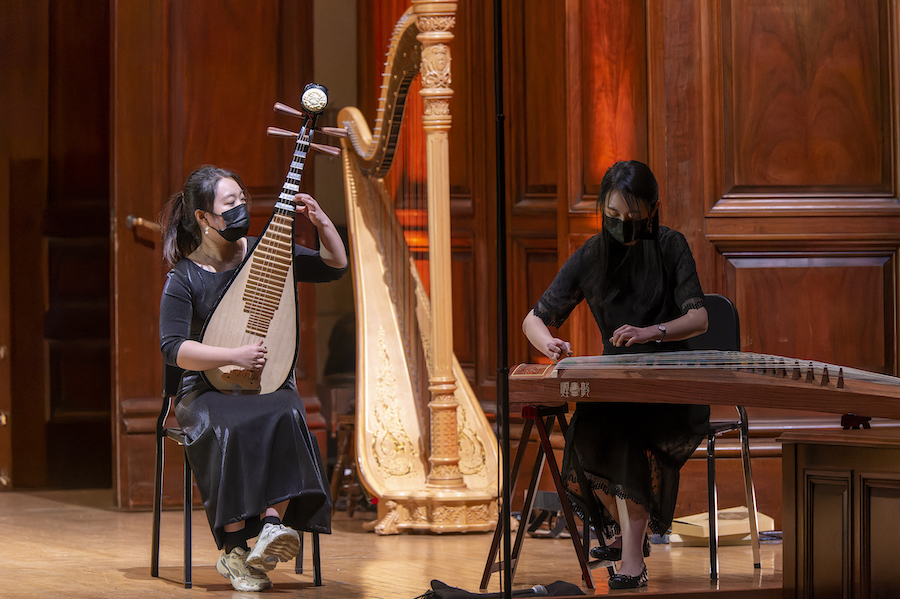
This entire process demonstrates how collaboration, ambiguity, and flexibility in the design and planning process was the heart of my growth as an artist. There was significant evolution in the concept and scope of Chen’s visit, with various conversations opening new opportunities and altering the path. Discussions about visual design influenced the conceptual philosophy of the concert, which influenced the concert programming that informed masterclass and coaching opportunities. Maintaining a continued dialogue with the Jasmine Field Orchestra allowed for flexibility in approach — we decided to integrate the traditional instruments into the concert a week before the performance! Though many of us like to have things perfectly planned out significantly ahead of the event, this experience taught me what items needed to be set far in advance (such as venue, funding, performers, and rehearsal times) and what could be tinkered with until the last possible moment (things like meals and receptions, lighting design, concert programs, and promotion) — it also forced me to become increasingly comfortable sending cold emails and pitching ideas to people I’ve never met.
I was also intentional in giving space and independence to my collaborators, such as the lighting designer and dancers. During the dress rehearsal, we spent quite a bit of time adjusting lighting color and adding “blueouts” to facilitate transitions, on the advice of the lighting designer. During the thirty-minute pre-show, I gave the lighting designer free reign in improvising dynamic effects, which perfectly complemented the string quartet. I was blown away by how the dancers added so much to their respective works. Here, I learned the importance of letting go of control, and to not micromanage my collaborators’ creative processes.

I believe this type of comprehensive artistic residency, a capstone project with a produced multimedia concert, created an immersive experience for both performers and audience, and maximized the impact of Chen Yi’s visit to hundreds of students and faculty in and beyond the College of Fine and Applied Arts. The two most important questions I asked throughout the process were “what if” and “why not,” questions of curiosity and optimism that opened unexpected doors for funding and collaboration. Allowing for elasticity while “following your nose” nurtures evolution of the creative design process. I was deeply intentional in reaching out to any person or department that I believed would be interested in the project, not just those who would naturally be interested. My goal here was to build bridges between disparate organizations and departments across campus and meet them on their own turf. This project also taught me the power of traversing bridges with other artists — that is, traversing bridges into a new space, and establishing new common ground that creates dialogue and cooperation on whatever the project may be. Getting to know the creative language of other artists in their own spaces is, to me, meaningful collaboration. From this residency, I learned to be more open and receptive to other ideas while also staying adaptive as circumstances changed. In many ways, the dreaming phase of the process (for me and my collaborators) didn’t really conclude until the residency week began, and that mindset ultimately led to an incredibly rewarding week with immense impact across artistic disciplines.

Have you led or been part of similar projects? I would love to hear your thoughts and perspectives in the comments below!
